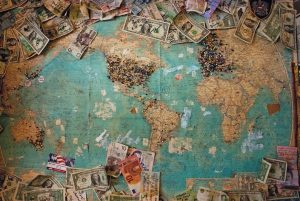Forex trading is the buying and selling of currencies on the foreign exchange market. It is a popular way to invest and potentially earn a profit. However, before diving into forex trading, it is important to understand how profits are calculated. In this article, we will explore the various factors that contribute to profit calculation in forex trading.
The first factor to consider is the exchange rate. The exchange rate is the value of one currency in relation to another. For example, if the exchange rate for the EUR/USD pair is 1.2000, it means that one Euro is worth 1.2000 US dollars. To make a profit in forex trading, a trader must buy a currency at a lower exchange rate and sell it at a higher exchange rate.
The next factor to consider is the lot size. A lot is the standard unit size in forex trading. The size of a lot varies depending on the currency pair being traded. For example, a standard lot for the EUR/USD pair is 100,000 units of the base currency (in this case, the Euro). The lot size determines the amount of currency being traded, which in turn affects the potential profit or loss.
Another important factor to consider is leverage. Leverage is the ability to control a larger amount of currency with a smaller amount of capital. For example, if a trader has a leverage of 1:100, it means that for every $1 of capital, the trader can control $100 of currency. Leverage can amplify profits, but it can also amplify losses, so it is important to use leverage responsibly.
The spread is another factor to consider when calculating profits. The spread is the difference between the bid price (the price at which a trader can sell a currency) and the ask price (the price at which a trader can buy a currency). The spread is usually measured in pips, which is the smallest unit of measurement in forex trading. The spread varies depending on the currency pair being traded and the broker being used. A narrower spread means a lower cost of trading, which can increase potential profits.
Finally, the profit or loss is calculated based on the difference between the opening and closing prices. If a trader buys a currency at a lower exchange rate and sells it at a higher exchange rate, the difference between the two prices is the profit. If the trader sells a currency at a higher exchange rate and buys it back at a lower exchange rate, the difference between the two prices is the profit. If the currency pair moves against the trader, the difference between the opening and closing prices is the loss.
In conclusion, profit calculation in forex trading involves several factors such as exchange rate, lot size, leverage, spread, and the difference between the opening and closing prices. Understanding these factors is essential for successful forex trading. It is important to conduct thorough research, develop a sound trading strategy, and use risk management techniques to minimize potential losses. With proper knowledge and skills, forex trading can be a profitable investment opportunity.






